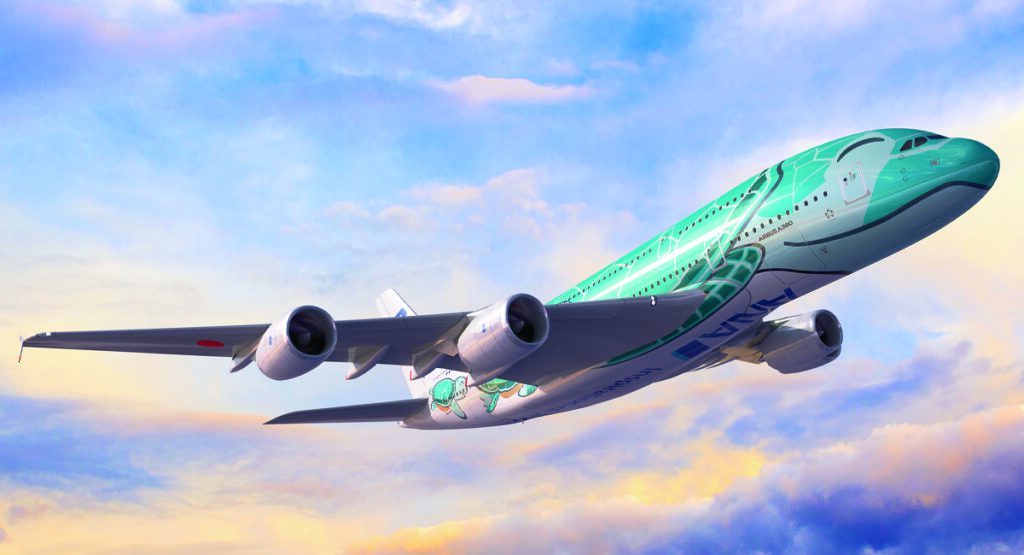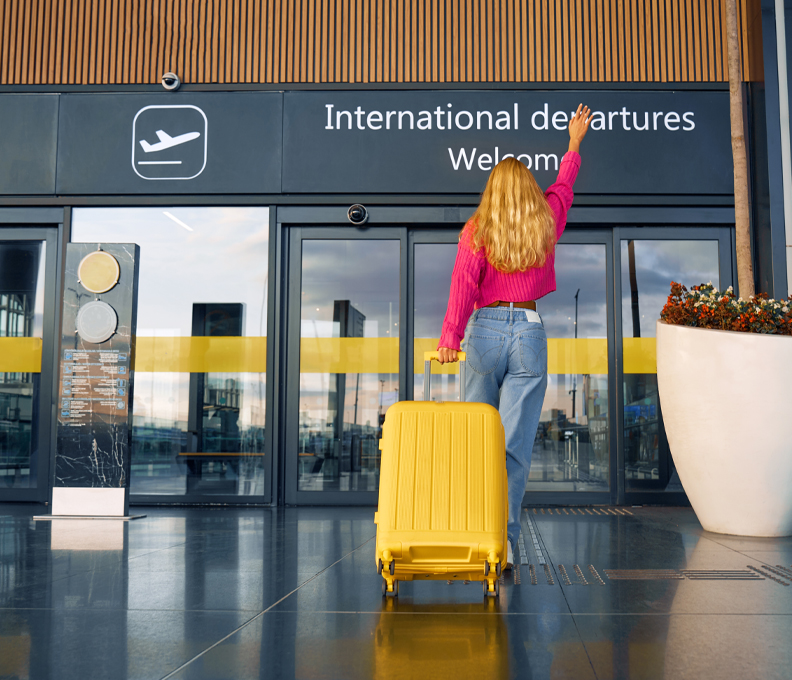Is There a Price for Greener Flights? Consumers Weigh In
Today’s travelers are willing to pay more for sustainable flights, but will it be enough?
by Lark Gould
September 1, 2023

Illustration: Yo Hosoyamada
While most of the nation’s consumers say they are concerned about air quality, climate change, and C02 emissions from airplanes, how many would pay more for greener flights?
According to a recent study from Ansys, an engineering consulting firm invested in structural analysis using advanced solver options, 65 percent of those concerned consumers would pay up to 10 percent more.
Nearly 70 percent of consumers surveyed by Ansys said they would be more inclined to trust alternative fuels, such as sustainable aviation fuel (SAF), electric, hybrid-electric, or hydrogen-powered, if the technology had been thoroughly tested and simulated using techniques already used in the aviation industry.

A rendering of the proposed biofuels refinery at the Port Westward. Courtesy of NEXT Renewables.
In 2021, air missions contributed more than two percent of the world’s energy-related CO2 emissions, growing more quickly in recent years than cargo, rail, or road. Together with other gases and vapor trails produced by aircraft, the airline industry can claim a five percent contribution to global warming. To put these numbers in perspective, roughly half of this contribution is generated by just one percent of the world’s population.
The aviation industry has been taking steps to address rising emissions. In 2009, it set ambitious targets for containing carbon-neutral growth from 2020 onward and halving its net emissions from 2005 levels by 2050.
While several air carriers have been introducing low-carbon fuels, setting advancements in aircraft and engines, and managing operational optimization, demand restraint solutions are required, and the will to action remains sketchy.

Photo: Amsterdam Schiphol. Courtesy of Ramon Kagie / Unsplash
Emissions from aircraft climbed by 32 percent between 2013 and 2018 and continue to rise quickly. This measure comes although increasing fuel efficiency is steadily lowering emissions per passenger. The ratio is not keeping up with the sharp rise in total passenger numbers, which are anticipated to quadruple in the next 20 years.
Investors in aviation stocks are also worried about the impact of climate risk on airline valuations as financial disclosures relating to climate change are becoming more prevalent. Between 2017 and 2020, there was an almost sevenfold increase in the frequency of climate-related conversations on results calls with investors in Europe, according to HSBC data cited by McKinsey & Company.
The 2020 report by the global consulting firm looked at governments and institutions announcing CO2 or SAF policies. Norway had ordered 0.5 percent of the nation’s aviation fuel to be sustainable that year, rising to 30 percent by 2030. By 2040, it asked for all short-haul planes to be entirely electric. Canada adopted a carbon tax of 30 Canadian dollars per metric ton of CO2 in most areas based on the amount of loaded fuel used for domestic travel.

Photo: Courtesy of ANA
The report showed consumer uneasiness as a significant pressure source on the industry. Approximately 5,300 travelers from 13 aviation markets participated in a McKinsey poll to express their opinions on flying and climate change. More than 50 percent of participants in the study stated they were “really worried” about climate change, which was at a time well before the coronavirus essentially shut down air traffic worldwide. These feelings were stronger in women than in males, and they were most noticeable in those under 34.
Those numbers were similarly born out and even more strongly in last month’s Ansys’ Sustainable Aviation Survey. The survey polled 6,029 respondents from the United States, the United Kingdom, France, and Germany between March 8 and 15 but did not stratify findings by age groups. Some key points from those findings include:
Sustainable Flying
• A majority of consumers are concerned about CO2 emissions (63 percent) and would pay for greener air travel (65 percent)
• 46 percent would travel in an aircraft powered by sustainable aviation fuel (SAF) in the next five years, 36 percent in electric, 38 percent in hybrid-electric, and 38 percent in hydrogen-powered aircraft.
• About a third of consumers (32 percent) are more likely to fly with airlines committed to reducing their carbon footprint.
The Future of Flight
• Most respondents (82 percent) would be comfortable flying in next-gen aircraft at speeds of 3,500 mph versus standard aircraft that flies at 560 mph to get to their destinations faster. Shortened flight times significantly benefit consumers, as 50 percent of respondents reported that they had not traveled somewhere in the past due to a long flight.
• More than half of consumers (57 percent) expect to fly in an electric vertical take-off and landing (eVTOL) aircraft at some point in their lives, citing potential benefits for daily commuting, including a stress reduction (27 percent), road rage (26 percent), and carbon footprints (35 percent).
• Almost half (47 percent) of consumers polled are prepared to fly in an autonomous plane in their lifetimes.
Sustainable Technologies and Flight Safety
• Despite anticipation to take an autonomous flight, the top concern for 57 percent of consumers is the absence of a pilot to respond to potential external or internal issues such as turbulence and flight control, respectively.
• For alternative aircraft such as SAF-powered planes, half of customers worry that technology isn’t proven yet, and almost 40 percent fear a technology failure.
“Consumer research is essential as the aviation industry transforms to meet the demands of consumers and needs of our planet,” said Walt Hearn, senior vice president of worldwide sales and customer excellence at Ansys, in a statement about the study.
“By virtually testing and verifying new technologies with simulation, aircraft manufacturers can demonstrate the viability of sustainable alternatives, build confidence where uncertainty exists, and expand the possibilities for next-generation air travel safely and efficiently.”




